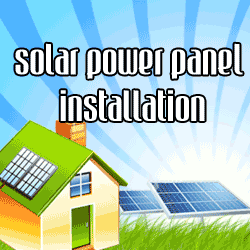
With today's rising energy costs, and no relief in sight, many consumers are looking to live "
off the grid." Even with an initial investment that can be steep, the benefits make it much
more economical in the long run.
There are small and some not so small ways why
off the grid living is a good alternative today. Even though the economical outlay can be steep at first, in the long run it definitely makes more sense for the environment.
Raising
your own food is a good way to begin living off the grid. This way, you eat organically while being secure in the knowledge that no dangerous hormones or chemicals are being introduced into your animals.
A cow can provide milk, butter and ultimately beef and leather. Chickens can provide eggs and meat, and flavoring for soup stock. Sheep can provide wool for warmth, and lambs for food; while goats are very good milk producers. Once you have a garden set up, you should never be short of vegetables. Canning and freezing is simple and cost effective for greens all winter long.
People that choose to live off the grid usually do require transportation, but with the availability of
hybrid cars; and the research towards possible ethanol fueled cars; wanting to avoid oil products is not as much of a hindrance now. The Amish have the best means of transportation with their horse and buggies. Of course, maintenance on the buggies and upkeep for the horses can be time consuming, but the benefit of no oil product consumption is a great motivator. Horses can also be used for plowing fields, entertainment and also as income if breeding is something one was interested in.
Buying clothes is becoming much more expensive these days. Children as young as five can't go to school in hand me downs or thrift store clothing because they will be teased. When living off the grid, you don't need to be stylish, and you probably have no desire to be stylish either.
Spinning wool from your sheep, and
knitting or weaving clothes and blankets is a great way to save money. Of course, these days, handspun wool can be a great income generator, as well as wool products, such as handknit sweaters and socks. Buying fabric from a local merchant is less expensive than buying clothes in a store, and can be just as nice as long as you know the basics of sewing. For some, sewing may be difficult, but that is an easy hurdle to overcome. There is always someone who would be willing to barter, especially if you are located near anyone else who chooses
off the grid living. Sharing your talents with others make self sustainable living much more enjoyable.
Generating
heat and energy is always a concern for those who choose to live off the grid. There are several choices available, but the initial investment can be steep. Once the infrastructure is setup, there is no reason to pay your power bill monthly, or to worry that you are going to freeze in the middle of the night during a storm.
Having your own power supply means freedom from being at the mercy of repair crews in the middle of the night when the power line has been knocked down, and also is much safer. Power is not vital to survival, and life can be enjoyable without it.
There are two power supply options with readily available instructions online.
Solar and wind energy can be very efficient, and have the benefit of being much cleaner than coal, oil or gas, and definitely much safer than nuclear power plants. There are several sources of this information available... just search "
off grid living"
The Amish community is a good example of living off the grid. They have even been able to integrate into the community without sacrificing their values or their way of life. If more people were willing and able to follow their lead, our
carbon footprint would be lessened, and our dependence on foreign oil would be nonexistent.
If we each made some small progress in
living green, there would be more people willing to make that next step to move off the grid, and our world would be a much cleaner home for all.
About the Author:Andrew Oke is very interested in renewable energy.He has 16 years experience living off the grid, and has completely built his own renewable energy system. Visit his website at
Living Off The GridArticle Source:
ArticlesBase.com -
Living on Green Energy












